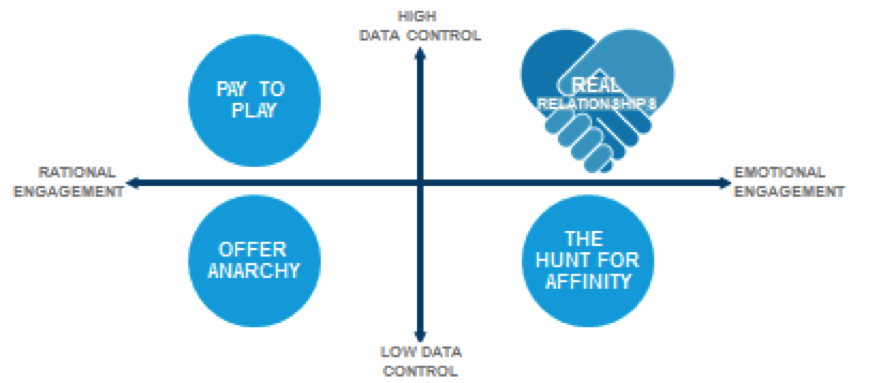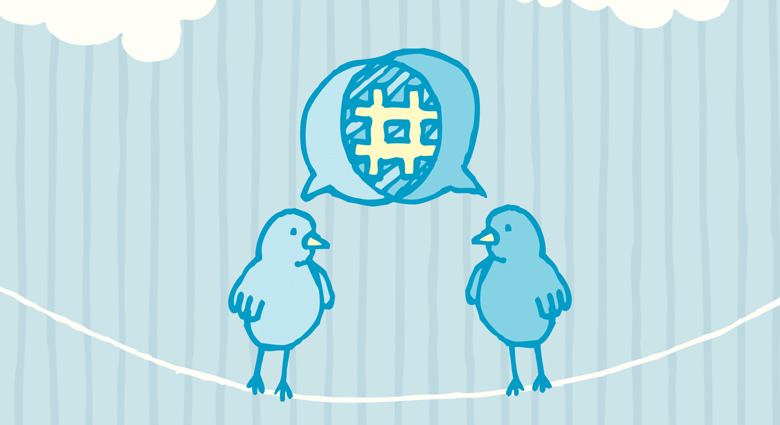The on-going digitization of everyday life is providing the world of marketing with numerous emerging opportunities to interact with customers in a timely and intimate way. The arrival of ever more data about consumer’s behaviours, attitudes and aspirations together with a rapidly expanding array of communication channels to talk with them should provide the opportunity to understand and reach out to consumers with a relevance that could previously only be dreamt of.
However, as with every previous revolution in customer data and channels, there lies the opportunity to either nurture these new possibilities for the long-term benefit of brands and customer relationships or to allow short-term promotional activity to prematurely flog them to death.
Achieving good ROI for marketing expenditure could become more a science than an art.
A new golden age of marketing
Looking to the future, we could be about to enter a golden age of marketing, where the right message can always be delivered to the right person at the right time in the right place in the right way, and to put the icing on the cake, we’ll be able to measure how the message worked. Achieving good ROI for marketing expenditure could become more a science than an art.
The potential implications for the future of Customer Loyalty are equally profound. The loyalty industry has always been at the forefront of both understanding customer behaviour and using this understanding to deepen relationships for the long term benefit of both companies and their customers. The potential to use new sources of data to understand customers even more and new communication channels to reward their behaviours more rapidly and relevantly bode well for the industry. So why a fork in the road? Surely on the above evidence the future for marketing as a whole, and the loyalty industry in particular, looks rosy? It does; but as with every era of technological development, there is a danger that industry gets carried away with what’s possible at the expense of what’s really wanted by consumers.
In an ‘always on’ digital future, we may soon have the ability to send messages to consumers at any time, wherever they are. It’s already starting to happen. However, there is currently a potentially dangerous and naive assumption in the marketplace that consumers are both willing and able to be in receipt of an endless stream of targeted messages wherever and whenever they may be, whatever they may be doing.
However relevant a message may be, there will clearly be times, places and occasions where consumers will prefer not to receive it. The key challenge for marketing is to embrace the digital transition with both hands while showing enough restraint to avoid killing this new goose that lays the golden eggs.
The key principles of loyalty; trust, personalization, reciprocity and a longer term perspective have never been more important.
Scenarios for the Future of Loyalty Management:
To enable us to understand how the future of loyalty management could evolve with these new capabilities becoming available, Aimia has undertaken a detailed Scenario Planning exercise to assess the key uncertainties and possible outcomes, and has distilled them into two key axes of uncertainty that will shape the future. The first axis of uncertainty is the degree to which data is brought under control by companies and/or individuals.
Currently, discussion around ‘Big Data’ tends to focus on what companies can do with it all, but as this new data rich, data driven world emerges, there are unanswered questions. Who will get access to what data, how will legislation evolve, will the value of data become more explicit and the degree to which consumers will be able to take ownership of their own data?
The second axis of uncertainty is the degree to which brand relationships will either shrink or deepen as a result of more plentiful data and opportunities to ‘nudge’ customers.
New sources of customer data, and new communication channels open the possibility of companies delivering relevant, timely messages to consumers, building deep, long lasting relationships. However, early signs suggest that these new sources of data and channels also create the potential for ever more bombarding of consumers with short term messages, potentially driving consumers to drift towards more deal based behaviours and weaker brand relationships.
As a result of these two axes of uncertainty, four interesting and equally possible future directions for our industry can be assessed.
What will loyalty management look like in 5 years’ time?

Future 1: Offer Anarchy
In this future the volume of customer data created by the digitization of everyday life remains freely available and only loosely controlled by companies, governments or consumers themselves. Consequently the opportunities presented by ‘always on’ customers tend to be over-exploited by many vendors leading to highly transactional deal-based behaviours, limited loyalty and frustrated, over-messaged consumers.
Future 2: Pay to Play
In this future, data is increasingly acknowledged to be both valuable and powerful by companies, governments and consumers alike. Consequently, it begins to be controlled and traded as a commodity requiring business to pay to access customers through increased rewards.
Future 3: The Hunt for Affinity
Potentially the future could evolve towards an environment where consumers and brands realise that despite a huge background of data driven, and only partially relevant communications and offers, it is possible to search out meaningful relationships that offer more relevance, value and affinity. In this future the total brand experience can start to overcome market noise, allowing strong longer term relationships to be built on more than just short term offers and rewards.
Future 4: Real relationships
Winning companies build deep trusting long-term relationships with customers.
The final possible future is the one that we should all strive to build. In this scenario, winning companies build deep trusting long-term relationships with customers, who in turn share their precious data to deepen the relationship yet further. It becomes a truly virtuous circle of partnership to help consumers manage a complex environment, and achieve value and satisfaction from their commercial relationships.
Due to the uncertainties that lay ahead, the scenarios are currently all equally likely to evolve, but any senior executives concerned about the longevity and prosperity of their business will understand that getting the correct contract with customers about the use and value of their data, together with a relevant and permission based contact strategy will ultimately build a better future. As we sometimes say at Aimia, the secret to successful long-term profitable relationships is to do things for and with consumers rather than to them.
If the industry gets this right, the new possibilities to better understand consumers by ‘Connecting the Dots’ of the various types of data that are now available about them, and the exciting new capabilities of mobile and social interactions should provide marketers with not just new channels, but a significantly expanded opportunity to build relationships, engagement, and long term loyalty.
image courtesy of wordpress.com





.png)



What Did You Think?